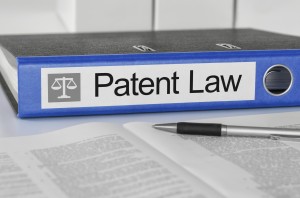 About a month ago, I wrote about what 2018 promises to teach IP lawyers about the state of the market, and by extension, where the practice of IP law is headed. While looking forward is an important part of the equation for any thinking lawyer, it can also be helpful to review what we have already learned. To that end, the recent release of the 2017 Lex Machina Patent Litigation Year In Review report (available here) provides a treasure trove of useful information for IP owners, defendants, and the patent attorneys who advise them. Yes, statistics can lie — but they can also illustrate and educate as well. Considering the ongoing turmoil in patent practice, it behooves IP lawyers to develop as informed a sense as possible of what has truly happened in the market’s immediate past. Reports like the one just released by Lex Machina are therefore an important contribution to the IP community.
About a month ago, I wrote about what 2018 promises to teach IP lawyers about the state of the market, and by extension, where the practice of IP law is headed. While looking forward is an important part of the equation for any thinking lawyer, it can also be helpful to review what we have already learned. To that end, the recent release of the 2017 Lex Machina Patent Litigation Year In Review report (available here) provides a treasure trove of useful information for IP owners, defendants, and the patent attorneys who advise them. Yes, statistics can lie — but they can also illustrate and educate as well. Considering the ongoing turmoil in patent practice, it behooves IP lawyers to develop as informed a sense as possible of what has truly happened in the market’s immediate past. Reports like the one just released by Lex Machina are therefore an important contribution to the IP community.
When reviewing the report, I focused on bits of information that I thought were both unambiguous and at least vaguely surprising. While the top-line statistics about the number of patent cases filed or the busiest patent courts are always of interest, the most useful takeaways I took from this year’s report had little to do with those numbers. Instead, I found myself most interested in determining where the statistics presented impacted on the way I think about patent litigation, whether because I was taught a certain way or my experiences have led me to formulate certain beliefs about my profession.
I was not disappointed. What follows are three things we (already should?) know about the state of patent litigation as we continue along in 2018. First, I strongly encourage everyone to really study the section on damages in the report. Patent lawyers often command a premium for their services, and everyone likes to focus on the possibility of the big payout in patent cases — a phenomenon driven by the occasional announcement of a mega-verdict that makes a lot of noise when issued. (By the time the case settles mid-appeal for a fraction of the amount awarded at trial, everyone has lost interest of course.)

The Trump Gold Card: A New $1 Million Pathway To A U.S. Green Card
A new proposal would let wealthy foreign nationals secure an opportunity for a U.S. green card with a $1 million 'gift' to the government, sparking legal and ethical debate.
Because of the tendency for clients and lawyers to overestimate the likely return from the cases they are involved with, it is worth remembering that only a small fraction of patent cases result in a damages award — at all. Perhaps most telling is Figure 52 on pg. 30 of the report, which shows that in 2017, there were more awards of attorney’s fees in patent cases than reasonable royalty awards. At minimum, statistics like these suggest that we must always keep in mind that patent litigation bears financial risk on all sides, especially in the current climate where the prevailing party is keen to extract maximum punishment from the loser.
Second, and continuing with the idea that having as much information on potential remedies is desirable for IP lawyers and their clients, the dataset on injunctions in the 2017 Lex Machina report was eye-opening. There is no doubt that the availability of permanent injunctions in patent cases was severely curtailed by the Supreme Court’s eBay decision a decade or so ago. As a result, the focus on injunctions, particularly for patent lawyers whose practices are heavily driven by non-practicing entity lawsuits, has waned considerably.
At the same time, considering the market impact of an injunction and their continued importance in competitor cases, it can be surprising just how little attention injunctions receive. The 2017 data, however, helps suggest why. In short, going for a contested temporary injunction is a very risky bet, with over 75% denied. In contrast, securing a permanent injunction — presumably after a win on the merits — is an almost automatic result, suggesting rewards for patent owners who successfully stay the course in competitor cases. So keep in mind that going for a preliminary injunction can be an expensive and unsuccessful detour, while the opposite is true for patent cases that ultimately resolve in the patentee’s favor.
Finally, it seems impossible to write a patent column nowadays without mentioning IPRs in some form or fashion. To me, perhaps the most stunning parts of the 2017 report were Figures 61 and 62 on pg. 36. The first chart illustrates how over 85% of IPR filings concern patents that have been litigated in District Court. This suggests at least two things: 1) That IPRs are usually a defensive measure, designed to secure a more favorable forum (and legal standard for invalidity) for defendants, and 2) that patent owner concerns over having their patents targeted without provocation may be overblown. For those patent owners who are targeted by an “unsolicited” IPR, that may be small comfort of course. The second chart illustrates how far we still have to go, particularly as defense lawyers, before we can say that IPRs are a first-line defense for those accused of infringement. This is a timely observation, considering 2017’s decline in IPR filings and the fact that less than 10% of cases filed in 2017 saw an IPR filed as an immediate response. That number may moderate as we approach the one-year time bar on the 2017 filings, but it is safe to say that the decision by defendants whether to file an IPR in response to an infringement claim remains an involved one.
Ultimately, there is plenty we can glean from looking at the data from 2017. While our analysis may help inform our client counseling approaches, the most important thing is to remember that each case is unique, with the chance to force us to confront challenges that historical data simply can’t prepare us for. With that in mind, take what you can from the report and this column, and go out and make your own statistics. For you and your clients, those will be the ones that count.
Final note: Now that everyone has settled back into work, it is a good time to consider professional events worth attending. In my experience, some of the best IP-related conferences are put on by organizations in the IP media-space, such as Managing Intellectual Property (MIP). For those interested, MIP’s U.S. Patent Forum 2018 is open for registration here. The event is free to attend for in-house counsel, and the agenda looks ambitious and interesting. If you are planning on attending the event as I am, please reach out as I would be keen on meeting readers of this column in person.
Please feel free to send comments or questions to me at [email protected] or via Twitter: @gkroub. Any topic suggestions or thoughts are most welcome.
Gaston Kroub lives in Brooklyn and is a founding partner of Kroub, Silbersher & Kolmykov PLLC, an intellectual property litigation boutique, and Markman Advisors LLC, a leading consultancy on patent issues for the investment community. Gaston’s practice focuses on intellectual property litigation and related counseling, with a strong focus on patent matters. You can reach him at [email protected] or follow him on Twitter: @gkroub.
